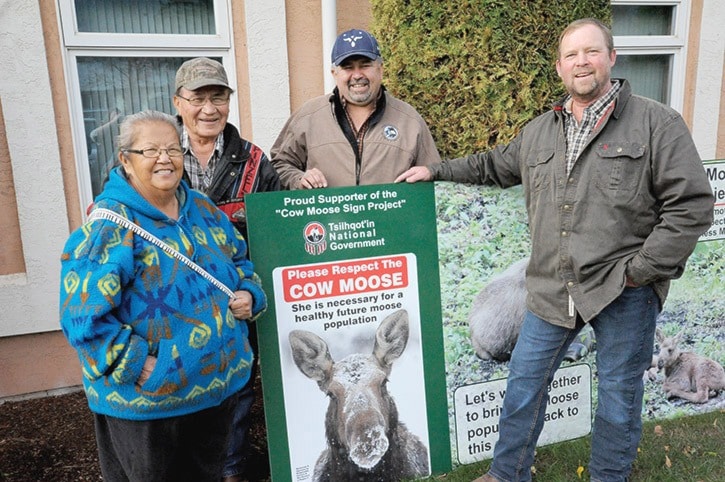The province announced $1.2 million in funding to help address a decline in B.C. moose populations following the release of a multi-level strategy to restore B.C.’s moose populations, Forests, Lands and Natural Resource Operations Minister Steve Thomson announced this week.
The funding is a response to the Strategy to Help Restore Moose Populations in British Columbia, which advises government to set priorities in key regions and enhance the integration of moose management with other land use activities.
The province is acting on all 21 recommendations in the report, according to a news release issued by the ministry.
Some of the immediate actions taken include:
• Reducing the number of limited-entry hunts for moose cows and calves from 1,792 in 2011 to 200 in 2016.
• Preparing moose management plans for the Peace, Omineca and Cariboo regions.
• Using existing tools to increase habitat protection.
• Expanding moose survey work planned for this winter to include calf mortality.
The moose strategy report was prepared by Al Gorley, who consulted with numerous First Nations, the B.C. Wildlife Federation, the Guide and Outfitters Association of B.C., the Wildlife Stewardship Council, the B.C. Cattlemen’s Association, and the Council of Forest Industries.
The new money is earmarked for on-the-ground activities like habitat enhancement and decommissioning unused forest service roads, which can affect moose survival, as well as research activities.
In his report, release in July 8, 2016, Gorley said the reason for the decline in moose is complicated and likely varies between regions.
“There is uncertainty about the underlying causes, which are likely a combination of altered habitat, hunters and predators, and perhaps even climate change. Many people point to a need for the province to modernize the way it manages for wildlife, taking a more integrated, ecosystem-based approach. Although (my) report is focused on the immediate matter of moose, it could be a first step toward more holistic change,” Gorley said in his report.
Gorley noted the current approach to managing for moose is largely passive — a derivative of other management activities such as timber harvesting, energy development, or other industrial land uses.
“As a result, controlling hunting under the Wildlife Act is often the only tool directly available to wildlife managers — this is not proving to be enough. In fact, the province’s ability to proactively manage for greater moose abundance is seriously constrained by some aspects of the legislation governing other resources. Public sentiment may also be a constraining factor, particularly where predator management is concerned. It will be necessary to make a conscious effort to ensure managing for moose is approached as a key aspect of integrated resource management at every stage.
Several of the recommendations can be implemented under existing conditions. However to succeed, any sustainable effort to restore and maintain moose numbers will have to occur in conjunction with changes to public policy.
